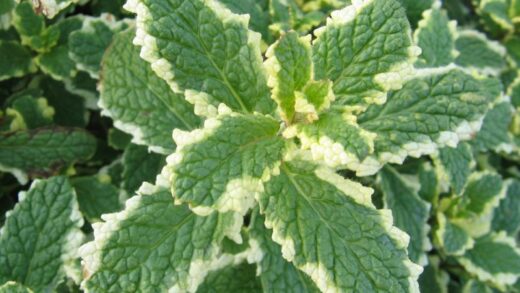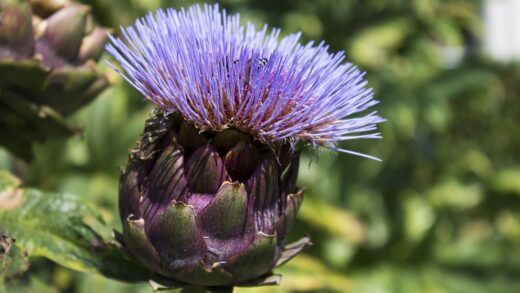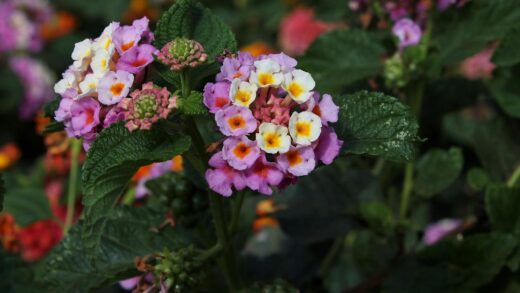Planting and propagating rosemary is a rewarding endeavor that allows a gardener to multiply this wonderfully aromatic and useful herb. The process begins with understanding the fundamental needs of the plant, which are rooted in its Mediterranean origins. Successful establishment, whether from a nursery-bought plant or through propagation, depends entirely on providing the right foundational conditions, specifically well-draining soil and ample sunlight. Whether one is planting a single specimen in a container or establishing a hedge in a garden bed, a thoughtful approach to soil preparation and site selection is paramount. This initial investment of effort pays dividends in the form of a robust and healthy plant that requires minimal intervention once established.
Selecting the right site
The first and most crucial step in planting rosemary is the careful selection of an appropriate site. This plant is a sun worshipper and demands a location that receives at least six to eight hours of direct sunlight each day. Insufficient light will result in a weak, spindly plant with sparse foliage and a lackluster aroma, as sunlight is the catalyst for the production of its essential oils. In garden design, this often means choosing a south-facing aspect, away from the shade cast by large trees or buildings, to ensure the plant can bask in the sun for most of the day.
In addition to light, the site must offer excellent drainage. Rosemary has a deep-seated intolerance for waterlogged soil, which is the most common cause of its demise. Before planting, it is essential to observe how the chosen area handles water after a heavy rain. If water pools or the ground remains soggy for hours, the site is unsuitable without significant modification. Ideal locations are often on a gentle slope, in a raised garden bed, or in areas with naturally sandy or gravelly soil that allows excess water to drain away freely and quickly from the root system.
Air circulation is another key environmental factor to consider when choosing a planting location. Good airflow around the plant helps to keep the foliage dry and discourages the development of fungal diseases like powdery mildew, to which rosemary can be susceptible in damp, stagnant conditions. While protection from harsh, cold winds is beneficial, planting in a completely enclosed or overly crowded space should be avoided. A balance must be struck, providing some shelter while still allowing for gentle breezes to pass through the branches.
Finally, one should consider the mature size of the specific rosemary cultivar being planted. Some varieties are low-growing ground covers, while others can grow into substantial shrubs several feet tall and wide. The chosen site must provide adequate space for the plant to reach its full potential without being crowded by neighboring plants. This foresight prevents future problems related to competition for light, water, and nutrients, and reduces the need for frequent, aggressive pruning to control its size.
Preparing the soil for planting
Proper soil preparation is a non-negotiable prerequisite for a healthy rosemary plant. Given its Mediterranean heritage, rosemary thrives in soil that is gritty, lean, and exceptionally well-draining. For in-ground planting, especially in areas with heavy clay soil, significant amendment is necessary. The goal is to improve the soil’s structure and porosity by incorporating materials like coarse sand, perlite, fine gravel, or even organic materials like composted bark, which help to create larger air pockets and drainage channels within the soil.
When preparing the planting hole, it should be dug to be at least twice as wide as the plant’s root ball, but not necessarily deeper. The amended soil should be used to backfill around the plant, creating a welcoming environment for the roots to expand into. It is a common mistake to only amend the soil within the planting hole itself, as this can create a “bathtub effect” in heavy clay, where the amended hole collects water and becomes a sump. Instead, it is better to amend a larger area around the planting site to ensure water can drain away effectively.
The nutrient content of the soil should be relatively low. Rosemary does not require, and in fact can be harmed by, overly rich soil. A soil that is too high in organic matter and nutrients can promote lush, weak growth that is more attractive to pests and less resilient to environmental stress. Therefore, heavy applications of rich compost or manure should be avoided. A small amount of balanced, slow-release fertilizer can be mixed into the soil at planting time, but in most cases, the native soil with drainage amendments is perfectly sufficient.
For container planting, creating the perfect soil mix is much simpler. A high-quality potting mix designed for cacti or succulents is often an excellent starting point, as these are formulated for sharp drainage. Alternatively, a custom mix can be created by blending one part standard potting soil with one part coarse sand and one part perlite or fine grit. This creates a light, airy medium that will not become compacted or waterlogged, providing the ideal conditions for rosemary’s sensitive root system to thrive in a container environment.
The process of planting
When it is time to transition a nursery-grown rosemary into the garden or a larger pot, careful handling is key to minimizing transplant shock. The plant should be watered thoroughly in its original container an hour or so before planting, which helps to hydrate the roots and ensures the root ball holds together during the transfer. When removing the plant from its pot, it is important to be gentle, tipping the container on its side and easing the plant out rather than pulling it by the stem, which can cause damage.
Once the plant is removed, the root ball should be inspected. If the roots are tightly coiled and circling the bottom of the pot, a condition known as being “root-bound,” they should be gently loosened. This can be done by carefully teasing the roots apart with one’s fingers or by making a few shallow vertical cuts into the sides of the root ball with a clean knife. This process encourages the roots to grow outward into the new soil rather than continuing to circle in their old, constrained pattern.
The plant should be set in the prepared hole at the same depth it was growing in its original container. Planting it too deep can lead to stem rot, a serious issue where the base of the stem, now buried under the soil, begins to decay. The top of the root ball should be level with or even slightly above the surrounding soil surface. After placing the plant, the hole should be backfilled with the amended soil, gently firming it around the root ball to eliminate large air pockets.
After planting, the rosemary should be watered deeply and thoroughly to settle the soil around the roots and provide immediate moisture. This initial watering is crucial for establishing good contact between the roots and the new soil. Following this, a layer of inorganic mulch, such as gravel or crushed stone, can be applied around the base of the plant. This type of mulch helps to suppress weeds and conserve soil moisture while keeping the crown of the plant dry, unlike organic mulches which can retain too much moisture and promote rot.
Propagation from cuttings
Propagating rosemary from stem cuttings is the most common and reliable method for creating new plants, and it ensures that the new plant will be genetically identical to the parent. The best time to take cuttings is in the late spring or early summer when the plant is in a state of active growth, but the new stems have begun to mature slightly. Look for healthy, vigorous stems that are not flowering, and select a section of semi-hardwood growth—stems that are firm but not yet old and woody.
Using a clean, sharp pair of pruning shears or a knife, take a cutting that is approximately four to six inches long from the tip of a healthy branch. The cut should be made just below a leaf node, which is the point on the stem where leaves emerge. Once the cutting is taken, carefully strip the leaves from the bottom two inches of the stem. This bare section of the stem is what will be inserted into the growing medium, and removing the leaves prevents them from rotting and provides a larger surface area for roots to develop.
While not strictly necessary, dipping the bare end of the cutting into a rooting hormone powder can increase the success rate and speed up the rooting process. The hormone encourages the development of new roots from the cut stem. After applying the hormone, the cutting should be inserted into a small pot filled with a light, sterile, and well-draining rooting medium, such as a mix of perlite and peat moss or coarse sand. The cutting should be inserted just deep enough for it to stand upright securely.
The pot with the cutting should be watered gently and then placed in a warm location with bright, indirect light. To maintain a humid environment, which is conducive to rooting, the pot can be covered with a clear plastic bag or placed in a propagator. It is important to ensure the plastic does not touch the leaves of the cutting. The medium should be kept consistently moist but not waterlogged. In four to eight weeks, the cutting should develop a healthy root system, which can be confirmed by a gentle tug on the stem that meets with resistance.
Propagation from seed
Growing rosemary from seed is a possible, though significantly more challenging, method of propagation. It is often a slow and unpredictable process, with germination rates that can be quite low and inconsistent. The seeds have a natural dormancy that must be broken, and they require specific conditions to sprout successfully. For gardeners who enjoy a challenge, however, it can be a rewarding experience that results in a large number of plants for a minimal cost.
To improve the chances of germination, the seeds require a period of cold stratification. This process mimics the natural winter conditions that the seeds would experience outdoors. The seeds can be mixed with a small amount of damp sand or peat moss, placed in a sealed plastic bag, and stored in a refrigerator for approximately three to four weeks. This cold, moist treatment helps to break down the seed’s hard outer coat and signals that it is time to begin the germination process once favorable conditions are provided.
After stratification, the seeds should be sown in a tray or pot filled with a sterile, fine-textured seed-starting mix. The seeds are very small and require light to germinate, so they should be pressed lightly onto the surface of the moist medium rather than being buried. A very light dusting of fine sand or vermiculite over the top is sufficient to hold them in place. The tray should then be covered with a clear plastic dome or lid to maintain high humidity and placed in a warm location with plenty of bright, indirect light.
Patience is essential when waiting for rosemary seeds to germinate, as it can take anywhere from two weeks to several months. Throughout this time, the growing medium must be kept consistently moist but never soggy, often best watered from the bottom to avoid dislodging the tiny seeds. Once the seedlings have emerged and developed their first true leaves, the cover can be gradually removed to acclimate them to lower humidity. When they are large enough to handle, they can be carefully transplanted into individual pots to continue growing.



















